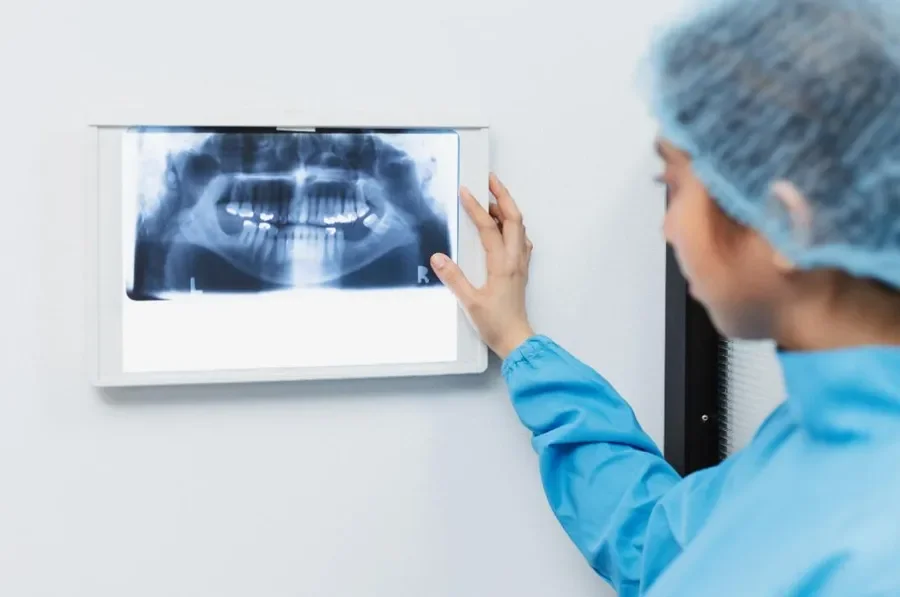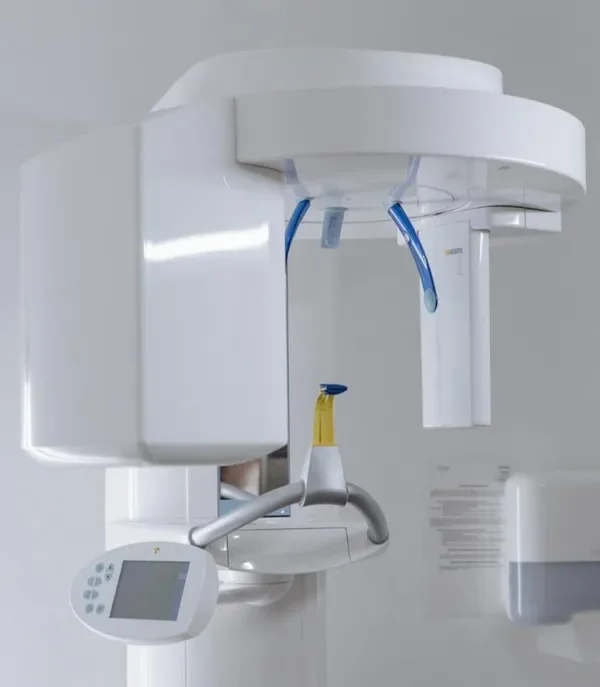When visiting the dentist, you might be told it’s time for a
couple of X-rays to get a close-up look inside of your oral
cavity. While this is a common procedure, you may wonder
why it is needed.

When visiting the dentist, you might be told it’s time for a couple of X-rays to get a close-up look inside of your oral cavity. While this is a common procedure, you may wonder why it is needed, what happens during the procedure, and if it can be eliminated from your visit altogether. X-rays at the dentist are used for several purposes.
What is a Dental X-ray?
Also called radiographs, a dental X-ray is an image of the internal structure of your mouth, showing a close-up of your teeth, gums, and jaw. Details are revealed about the enamel, nerves, roots, and sinuses.
Why Do You Need a Dental X-Ray?
For a clear, intricate view of what is happening in your mouth, an X-ray may be required. Dental X-rays show things the human eye or even everyday dental tools can’t distinguish. Your dentist will want to take an X-ray of your mouth to determine if there are dental concerns like cavities, cysts, periodontal disease, tumours, and other such issues. You need not be in fear of any harmful radiation exposure because dental X-rays emit very small amounts and there is little risk. If there are any signs of major oral health concerns your dentist will recommend an Xray to help identify the issue and map out a course of action.
How Often Should You Get Dental X-Rays?
It is always a good idea to speak with your dentist or doctor about the possible effects of radiation from an x-ray. This will help you make an informed decision. X-rays are typically needed during your very first appointment with a dentist, so they have a comprehensive view of your oral structure. X-rays at the dentist usually occur once every six to 18 months depending on your situation.

When You May Want to AVOID Getting Dental X-rays
There are situations where you may consider steering clear of X-rays in a dental examination, and these are:
During pregnancy
Though it is reported that wearing a lead apron has never exposed an embryo or fetus to radiation you, understandably, will want to take all precautions during this time. Dentists will postpone X-rays during pregnancy as an added concern for safety.
A child under 5 years old
Though there is no set age for children to begin getting dental X-rays, it is a good idea to wait until they are at least 5 years old. This is the age they are usually more comfortable with being at the dentist and having their teeth examined. Today’s dental X-ray machines are quick and have child settings that keep radiation exposure to a minimum for their growing bodies.
What Happens During a Dental X-ray?
- Step 1: Luckily, there is no preparation involved when it comes to getting a dental X-ray other than brushing your teeth. Clean teeth help your dentist get an even more clear view of what is happening inside your mouth.
- Step 2: You sit in the dentist’s chair with a lead vest on your chest and lap to help protect you from radiation.
- Step 3: Typically, the X-ray machine is positioned to the side of your cheek, and you will bite down on a little plastic or cardboard frame that encompasses an X-ray film. Your dentist might use a digital sensor instead. You may be required to get more than one type of X-ray image taken.
- Step 4: That’s it, you’re all done!
Kinds of Dental X-rays
Four types of X-rays can be done at the dentist’s office. Each has a different purpose, and your dentist will determine which is the one to use for your situation.
- Periapical Imaging – Usually performed on new patients, this X-ray shows the anatomy of all the teeth and their support structures.
- Bitewing Imaging – This imagery will show a view of the upper and lower molars.
- Panoramic Imaging – A view of the structures in and around your oral cavity including your jaws, teeth, and sinuses.
- Occlusal X-rays – The mouth floor and palate are visible through this type of X-ray.
Concluding…
X-rays at the dentist are painless and help your dentist do his/her job. You can get an all-clear from your dentist with the help of oral health imaging machinery. Knowing your dentist can pinpoint any potential issues will give you peace of mind. At Glenbrook Dental, we will only recommend X-rays when needed and if you are feeling a little uneasy about them, speak to us. We will help you better understand the situation to aid in calming your nerves.
